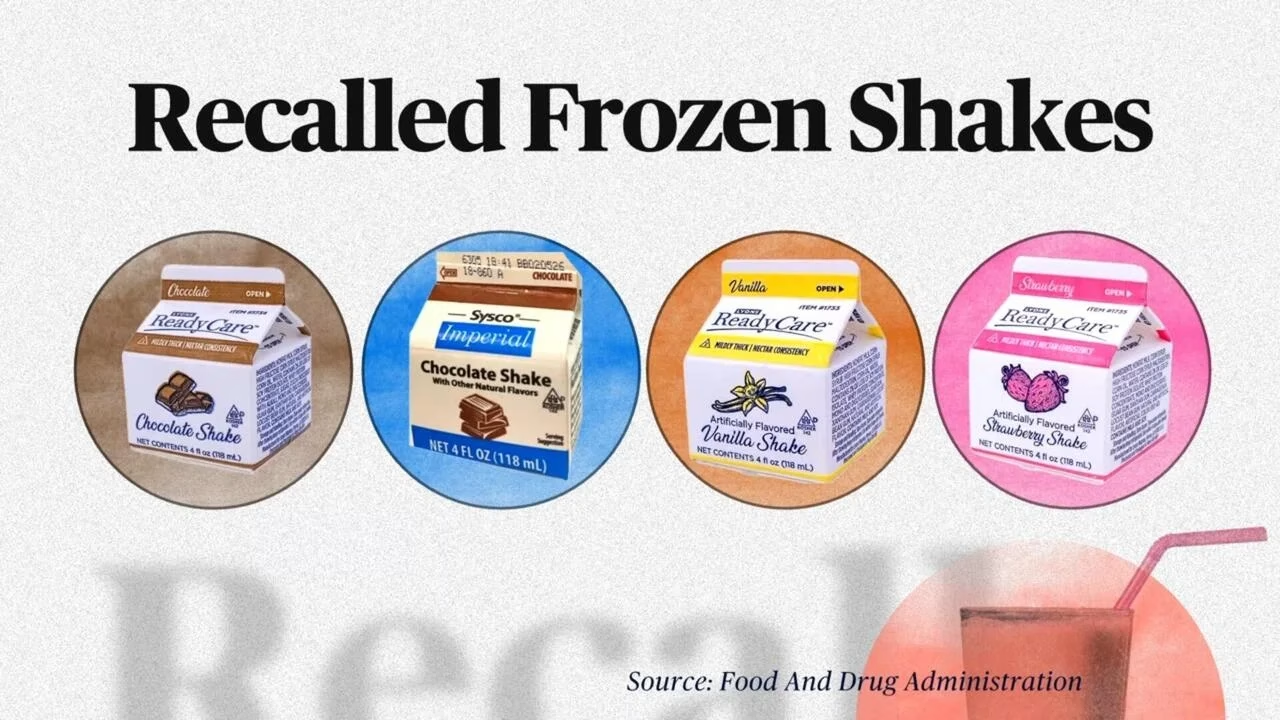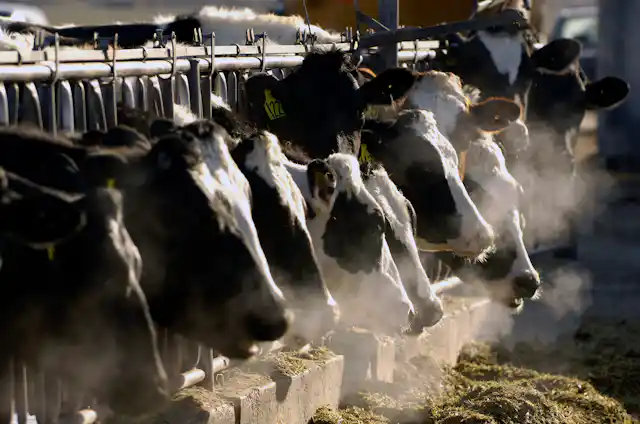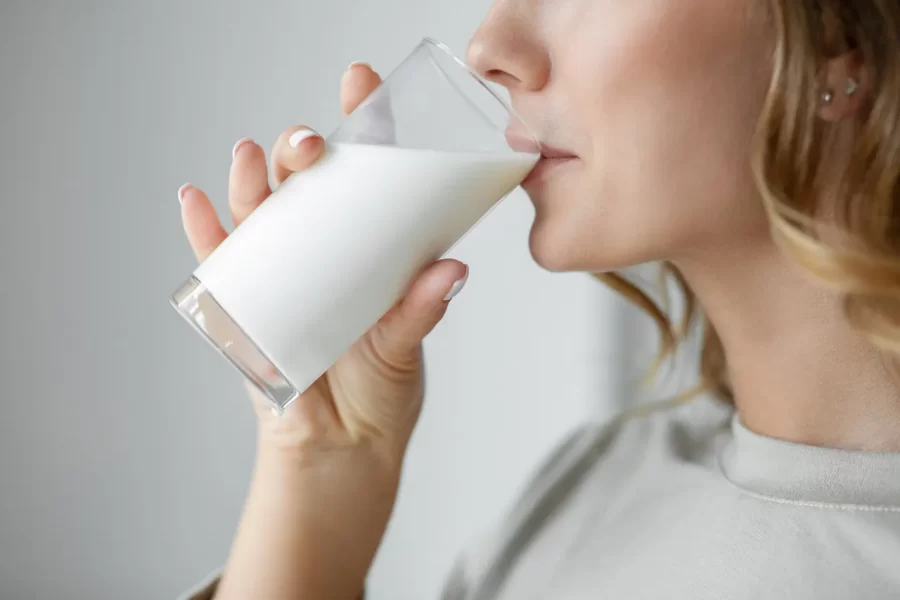A seven-year listeria outbreak tied to nutritional shakes has claimed 12 lives, exposing systemic gaps in food safety for vulnerable populations. As FDA traces the strain to Prairie Farms’ Indiana facility, families demand accountability while dairy markets reel from recall fallout.
Executive Summary:
A multi-state Listeria monocytogenes outbreak linked to frozen nutritional shakes produced by Prairie Farms Dairy in Fort Wayne, Indiana, has resulted in 38 illnesses, 37 hospitalizations, and 12 deaths since 2018, primarily among elderly long-term care residents. The FDA and CDC confirmed genetic matches between patient samples and Listeria found at Prairie Farms’ Lima Road facility, prompting a nationwide recall of Lyons ReadyCare and Sysco Imperial brand shakes distributed to hospitals and nursing homes. Despite three prior CDC investigations, the outbreak source remained elusive until February 2025, raising questions about detection protocols for institutional food suppliers. Prairie Farms has halted production and initiated facility audits, while dairy markets face turbulence from retaliatory tariffs and shifting consumer demand.
Key Takeaways
- 🚨 12 deaths tied to Listeria in nutritional shakes from Prairie Farms’ IN facility
- 🕵️♂️ Outbreak strain persisted since 2018, evading detection until 2025
- 🏥 89% of cases involved hospitalized or LTCF residents
- 📉 Recall coincides with dairy market turmoil: butter -4.5¢, cheese stocks +1.1%
- 📜 Proposed FDA rules aim to prevent future institutional outbreaks

FORT WAYNE, Ind.—The whir of industrial freezers has fallen silent at Prairie Farms Dairy’s 3400 Lima Road facility, where FDA investigators in hazmat suits recently swabbed conveyor belts and drain pipes. Their discovery? A persistent Listeria monocytogenes strain genetically identical to bacteria that infected 38 patients across 21 states—a pathogen lurking in the plant’s shadows since at least 2018, according to Whole Genome Sequencing data.
The outbreak, which claimed 12 lives and hospitalized 37 others, has exposed critical vulnerabilities in food safety systems protecting society’s most vulnerable. Ninety percent of victims resided in long-term care facilities or hospitals, their immune systems already weakened by age or illness. Many relied on Lyons ReadyCare and Sysco Imperial nutritional shakes—products now recalled nationwide—as dietary staples under physician supervision.
Timeline of a Tragedy
The Silent Spread (2018–2023)
- August 2018: First listeriosis cases emerge in Washington state and Michigan, but sporadic illnesses fail to trigger alarms.
- 2021: CDC detects outbreak cluster through PulseNet, but traceback efforts stall without a clear food vector.
- 2023: Hospital records show eight patients consumed “nutritional supplements,” but brand details remain elusive.
The Breaking Point (2024–2025)
- October 2024: Six new cases in Ohio and Florida prompt renewed FDA probe.
- February 4, 2025: FDA inspectors collect 32 environmental samples at Prairie Farms’ facility; three test positive for the outbreak strain.
- February 22: Voluntary recall issued for 4oz shakes with expiration dates through August 2025.
Why This Outbreak Evaded Detection
- Institutional Reporting Gaps: Only 28% of long-term care facilities automatically test residents for listeriosis, per CDC data. Symptoms like fever and fatigue often mimic age-related decline.
- Intermittent Contamination: Prairie Farms’ production cycles—alternating between shakes and ice cream—allowed Listeria to resurge post-sanitation.
- Supply Chain Complexity: Shakes reached patients through third-party distributors like Lyons Magnus, obscuring brand visibility.
“This wasn’t a failure of science, but of systems,” said Dr. Lila Torres, a foodborne illness specialist at Johns Hopkins. “When vulnerable populations consume institutionally sourced foods, we need real-time pathogen surveillance, not retrospective detective work.”
Corporate Response Under Scrutiny
Prairie Farms CEO Matt McClelland emphasized cooperation with regulators in a February 26 statement:
“We’ve ceased production and are overhauling protocols. Every resource is being deployed to prevent recurrence.”
Yet regulatory filings reveal troubling details:
- The Fort Wayne facility scored 72/100 on its 2023 FDA inspection—above the 67.5 industry average but below top performers.
- No prior Listeria positives were reported, suggesting gaps in environmental monitoring.
“Scoring 72 is like getting a C-minus in food safety,” noted former FDA investigator Carl Riggs. “For high-risk foods served to immunocompromised people, we need A+ standards.”
Ripple Effects Across Dairy Markets
While Prairie Farms grapples with fallout, broader dairy sectors face parallel crises:
- Butter Prices: Plunged 4.5¢/lb to $2.37 as Canada imposed 25% tariffs on U.S. exports.
- Cheese Stocks: American-type inventories hit 837.8 million lbs—up 1.1% monthly—as recalls dampen demand.
- Raw Milk Debate: Conservatives’ growing raw milk consumption (up 14% since 2022) clashes with H5N1 avian flu risks in unpasteurized products.
What’s Next?
- Litigation Watch: Twelve families have retained food safety attorneys, with lawsuits expected by April 2025.
- Regulatory Reforms: Proposed FDA rule (Docket No. 2025-0092) would mandate weekly Listeria testing at facilities serving institutional clients.
- Market Shifts: Sysco seeks new shake suppliers as Lyons Magnus explores plant-based alternatives.
Learn More
- Dairy Safety in Crisis: Lessons from the 2025 Listeria Outbreak
- Tariff Wars: How Global Trade Policies Are Reshaping U.S. Dairy
- Raw Milk Risks vs. Rights: The Newest Front in Food Freedom Battles
 Join the Revolution!
Join the Revolution!
Bullvine Daily is your essential e-zine for staying ahead in the dairy industry. With over 30,000 subscribers, we bring you the week’s top news, helping you manage tasks efficiently. Stay informed about milk production, tech adoption, and more, so you can concentrate on your dairy operations.







 Join the Revolution!
Join the Revolution!







